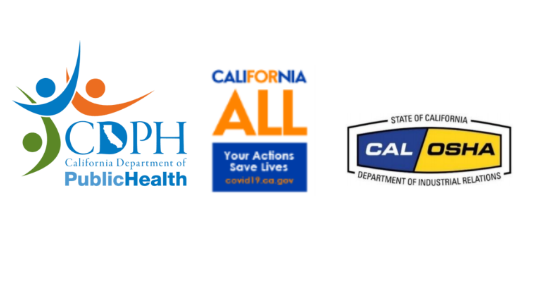Title Page
-
Conducted on
-
Prepared by
-
Location
Contents of Written Worksite Specific Plan
-
The person(s) responsible for implementing the plan.
-
A risk assessment and the measures that will be taken to prevent spread of the virus.
-
Training and communication with employees and employee representatives on the plan.
-
A process to check for compliance and to document and correct deficiencies.
-
A process to investigate COVID-cases, alert the local health department, and identify and isolate close workplace contacts of infected employees until they are tested.
-
Update the plan as necessary to prevent further cases.
Topics for Employee Training
-
Information on COVID-19, preventing spread, and who is especially vulnerable. <br>https://www.cdc.gov/coronavirus/2019-ncov/index.html
-
Self-screening at home, including temperature and/or symptom checks using CDC guidelines.<br>https://www.cdc.gov/coronavirus/2019-ncov/symptoms-testing/symptoms.html
-
The importance of not coming to work if employees have a frequent cough, fever, difficulty breathing, chills, muscle pain, headache, sore throat, the recent loss of taste or smell, or if they or someone they live with has been diagnosed with COVID-19.
-
When to seek medical attention.
-
The importance of hand washing.
-
The importance of physical distancing, both at work and off work time.
-
Proper use of cloth face covers
Individual Control Measures and Screening
-
Symptom screenings and/or temperature checks.
-
Encourage workers who are sick or exhibiting symptoms of COVID-19 to stay home.
-
Encourage frequent handwashing and use of hand sanitizer.
-
Provide disposable gloves to workers who are screening others for symptoms, who touch items frequently handled by customers, or when cleaners and disinfectants.
-
Strongly recommend use of cloth face covers.
-
Close or increase distance between tables/chairs in breakrooms or provide break areas in open space to ensure physical distancing.
-
Restrict non-employees entering the facility to only those classified as essential by management
Cleaning and Disinfecting Protocols
-
Perform thorough cleaning in high traffic areas.
-
Frequently disinfect commonly used surfaces.
-
Clean and sanitize shared equipment between each use.
-
Coordinate cleaning product use with the USDA and/or FDA if used in food production areas.
-
Clean touchable surfaces between shifts or between users, whichever is more frequent.
-
Ensure delivery vehicles and equipment are cleaned before and after delivery routes and carry sufficient sanitation materials.
-
Avoid sharing tools and other items. If shared, clean and disinfect.
-
Ensure that sanitary facilities stay operational and stocked all times.
-
Ensure employees have ready access to sanitizer and other sanitary items they may need.
-
Use products approved for COVID-19 on the Environmental Protection Agency (EPA)-approved list and follow product instructions and Cal/OSHA requirements.<br>https://www.epa.gov/pesticide-registration/list-n-disinfectants-use-against-sars-cov-2
-
Provide time for workers to implement cleaning practices before and after shifts, hire third-party cleaning companies.
-
Consider upgrades to improve air filtration and ventilation. If fans are used in the facility, ensure that fans blow clean air at the workers' breathing zone.
Physical Distancing Guidelines
-
Implement measures to physically separate workers by at least six feet using measures such as physical partitions or visual cues (e.g., floor markings, colored tape, or signs to indicate to where workers should stand).
-
Modify the alignment of workstations, including along processing lines.
-
Install physical barriers, such as strip curtains, Plexiglas or similar materials.
-
Designate workers to monitor and facilitate distancing.
-
If necessary to ensure physical distancing, increase the number of shifts in a day, slow down the line speeds, and space out workers in accordance with CDC guidelines.
-
Consider cohorting (grouping together) workers to always work together.
-
Minimize exposure between persons where physical distancing cannot be maintained, such as Plexiglas barriers.
-
Adjust in-person meetings, if they are necessary, to ensure physical distancing.
-
Delineate one-way pathways to prevent employees from coming into close contact in narrow hallways.
-
Reconfigure, restrict or close common areas and create alternative space for breaks where physical distancing is possible.
-
Stagger start times and employee breaks, in compliance with wage and hour regulations, to maintain physical distancing protocols.
-
Modify offerings in on-site cafeterias, including using prepackaged foods.
-
Keep drivers in their trucks while on property, with a non-contact delivery protocol at the security gate.
-
Adjust delivery and pickup processes to minimize contact.
-
Encourage workers to avoid carpooling to and from work, if possible.
Sign Off
-
Name and Signature
















